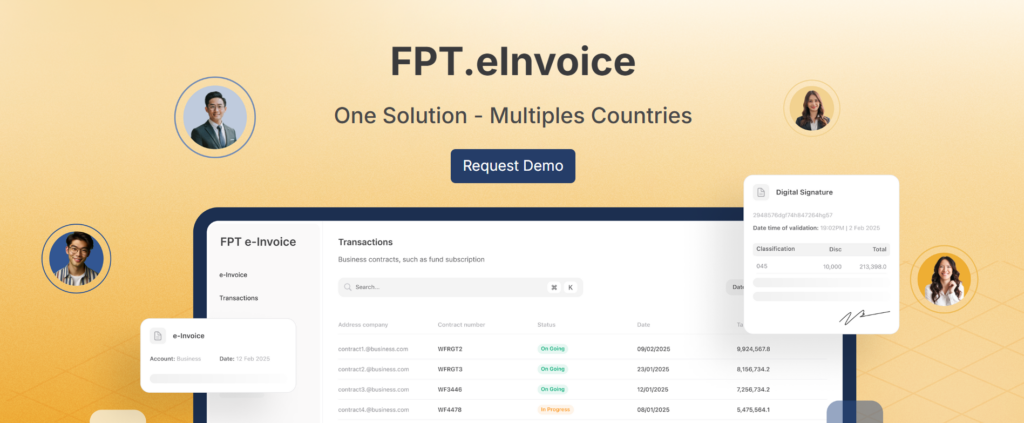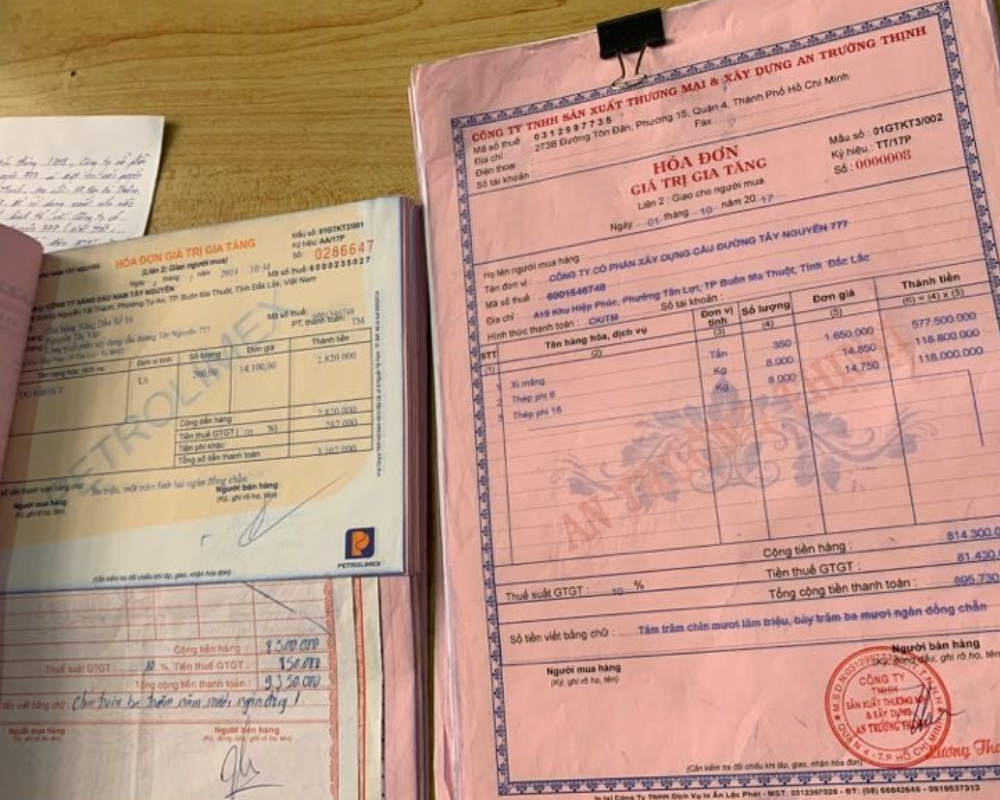Menu
The goal of Decree 123 is to establish a unified legal framework, modernize the management of invoice and document usage, and mandate the nationwide implementation of electronic invoices (e-invoices) starting July 1, 2022. The Decree governs the management and use of invoices when selling goods or services and the use of documents in tax, fee, and charge-related procedures.
Its scope is broad, covering all organizations and individuals involved with invoices and documents: from sellers (enterprises, economic organizations, household businesses, public service units with sales activities) to buyers; from tax-collecting agencies to taxpayers; personal income tax withholding entities; software providers and electronic invoice/document solution vendors; as well as tax authorities (General Department of Taxation, provincial tax departments, district tax offices) and customs authorities. In other words, all businesses—across industries and scales—are subject to Decree 123 and must transition to using e-invoices accordingly.
How to Implement E-Invoices Under Decree 123
To comply with Decree 123, businesses must switch to using e-invoices and follow the procedures guided by tax authorities. Below are the specific implementation steps:
Step 1: Register for E-Invoice Use with the Tax Authority
Before using e-invoices, businesses must register with their local tax authority. Registration is done via the General Department of Taxation’s online portal (or through a certified e-invoice service provider). The business must submit Form 01/ĐKTĐ-HĐĐT (from Appendix IA of Decree 123), providing details about the type of invoice (with or without tax authority codes), method of data transmission, etc., and send it electronically to the tax office.
Within one working day from receiving the registration, the tax office will respond via email or the e-invoice service system. If the application is valid, the authority will issue a Notice of Approval for E-Invoice Registration (Form 01/TB-ĐKĐT), after which the business can start issuing e-invoices. If rejected, the reason will be provided so the business can revise and resubmit.

Note: For e-invoices with tax authority codes, businesses using the free system provided by the General Department of Taxation are not charged a service fee. For businesses (usually large-scale) that connect directly to the tax authority’s system, technical coordination is needed to establish and test data transmission within 5–10 working days before official use.
After receiving approval, businesses must stop using paper invoices or e-invoices under the old regulations. Any unused pre-printed or self-printed invoices must be officially canceled and reported to the tax authority. From that point, the business must use e-invoices in accordance with Decree 123.
Step 2: Use Software to Create and Issue E-Invoice
Businesses must use invoice software that complies with the data standards of the General Department of TaxBusinesses must have invoice software that complies with the data format standards of the General Department of Taxation to generate and issue e-invoices. This can be done using services from approved providers or via the free system provided by the tax authority (for qualifying small businesses and household businesses). Once registered (Step 1), company accountants can generate e-invoices for each sale or service through the software.
Basic process of generating and issuing e-invoices:
- Create the e-invoice: Upon a sale or service transaction, the seller enters all necessary details into the e-invoice software: buyer’s information (name, tax code, address, etc.), list of goods/services, unit prices, tax rates, tax amount, total amount, and invoice date. The invoice is then digitally signed using the company’s digital signature to validate it.
- Submit to tax authority for code (for coded invoices): If using coded invoices, once signed, the software automatically sends the invoice data to the tax authority for code issuance. The system verifies and assigns a unique code to the invoice. The coded invoice is then returned to the business for delivery to the buyer. This process occurs rapidly via internet connection.
- Send invoice to customer: The e-invoice is delivered to the buyer via email or an online portal, typically in PDF format with an XML data file attached. The buyer can verify the legality of the invoice on the General Department of Taxation’s portal (for coded invoices). For uncoded invoices (applicable in special cases), the invoice can be sent directly without coding, but data must still be transmitted to the tax authority as registered (via service providers or the tax portal). This transmission is usually automated by the software, and businesses just need to ensure stable internet connectivity.
Note on invoice issuance time: Businesses must issue invoices at the correct time as required by law—usually at the point of service delivery or goods transfer. Decree 123 and Circular 78/2021/TT-BTC provide specific guidance for various sectors (e.g., utilities, telecom, transport, construction, real estate), and accountants must strictly comply to avoid penalties for late or incorrect issuance..
Step 3: Manage E-Invoices After Issuance
While e-invoices simplify management, businesses must ensure proper handling to maintain compliance:
- Invoice delivery and documentation: Buyers receive invoices via email or software platforms. Businesses should confirm that customers have received their files (PDF/XML) and guide them on how to verify invoices on the tax portal (for coded invoices). Sellers must ensure easy invoice access for buyers, including providing search links or invoice codes if needed.
- Handling invoice errors: If errors are found after issuance (e.g., incorrect buyer info, tax amount, tax rate, or missing items), businesses are not allowed to modify the original invoice. Instead:
- If the error does not affect monetary values, a notification (Form 04/SS-HĐĐT) is submitted to the tax office without reissuing the invoice.
- For significant errors, both buyer and seller must sign an error acknowledgment and the seller must issue either an adjusted or replacement invoice referencing the original.
- For coded invoices with errors, notify the tax authority to cancel the incorrect invoice and issue a new one (with a new code) for the buyer.
All corrections must follow Article 19 of Decree 123 and Circular 78 to avoid fines for noncompliance.
- Monitor invoice usage: With real-time invoice data accessible to tax authorities, businesses no longer need to submit regular usage reports (Form BC26/AC has been abolished), easing administrative burdens. However, businesses should still monitor the number of invoices issued—especially if managing their own uncoded ranges—and promptly register for additional invoice templates when needed.
- Data security: Since e-invoices are stored digitally, businesses must implement proper access control and data protection procedures. XML invoice files should be regularly backed up and securely stored. Prevent unauthorized access and data loss—Decree 123 strictly prohibits intrusion or system tampering and imposes heavy penalties for violations. Businesses should work closely with their e-invoice providers for timely technical support.
Step 4: Store and Preserve E-Invoices
E-invoices have the same legal value as paper invoices, and must be preserved accordingly. Per Decree 123, invoices and documents (including e-invoices) must be stored securely and confidentially for the duration required by the Accounting Law—currently, 10 years for important records.
Businesses can store invoices:
- On internal servers,
- Using cloud-based systems,
- Or via a certified e-invoice service provider.
Regardless of storage method, e-invoices must maintain integrity, be accessible and retrievable at any time during the retention period. Upon request by tax or other authorities, businesses must present the e-invoice or a valid paper-converted version, signed and stamped by the legal representative.
Although tax authorities retain a copy of coded invoice data, businesses should not rely solely on this and are encouraged to maintain their own regular backups (e.g., external drives or other storage solutions) to avoid data loss or system failures.
Recommended Software and Solutions
To implement e-invoices, businesses must select suitable software solutions. Here are some trusted and widely used options that comply with Decree 123 and are approved by the tax authority:
- Use the free e-invoice system from the General Department of Taxation: The Ministry of Finance offers free e-invoice services to eligible groups, including small- and medium-sized enterprises, cooperatives, and individual businesses in economically disadvantaged or especially difficult areas. These entities can register to use the tax authority’s portal to issue coded invoices at no cost.
- Contract services from reputable e-invoice providers: Many tech companies provide full e-invoice solutions. Leading providers include FPT.eInvoice, S-Invoice, MeInvoice, etc. These providers are certified by the General Department of Taxation, contractually connected to the tax system, and ensure compliance with XML standards and reliable data transmission.

- Direct integration with enterprise management software: Large businesses with their own ERP or POS systems may integrate e-invoice functionality directly. These businesses can build their own solutions if they have strong IT teams, but in most cases, they collaborate with solution providers to ensure standard-compliant connectivity.
When choosing a provider, businesses should prioritize those certified by the General Department of Taxation. Top-tier providers offer robust infrastructure, 24/7 support, and long-term operational stability.
Conclusion
Implementing e-invoices under Decree 123/2020/NĐ-CP is mandatory for all businesses and represents a significant step in the digital transformation journey. Companies must thoroughly understand the new regulations and comply with all procedures related to registration, issuance, management, and storage to mitigate legal risks.
In addition to ensuring compliance, using e-invoices brings many practical benefits: reducing printing and storage costs, optimizing billing and delivery processes, enhancing professionalism with clients and partners, and accelerating payment and revenue cycles.
With the detailed guidance above, it is hoped that all businesses—regardless of industry or size—can seamlessly and effectively transition to e-invoices under Decree 123 and fully benefit from the convenience and efficiency that e-invoices bring to business operations.









